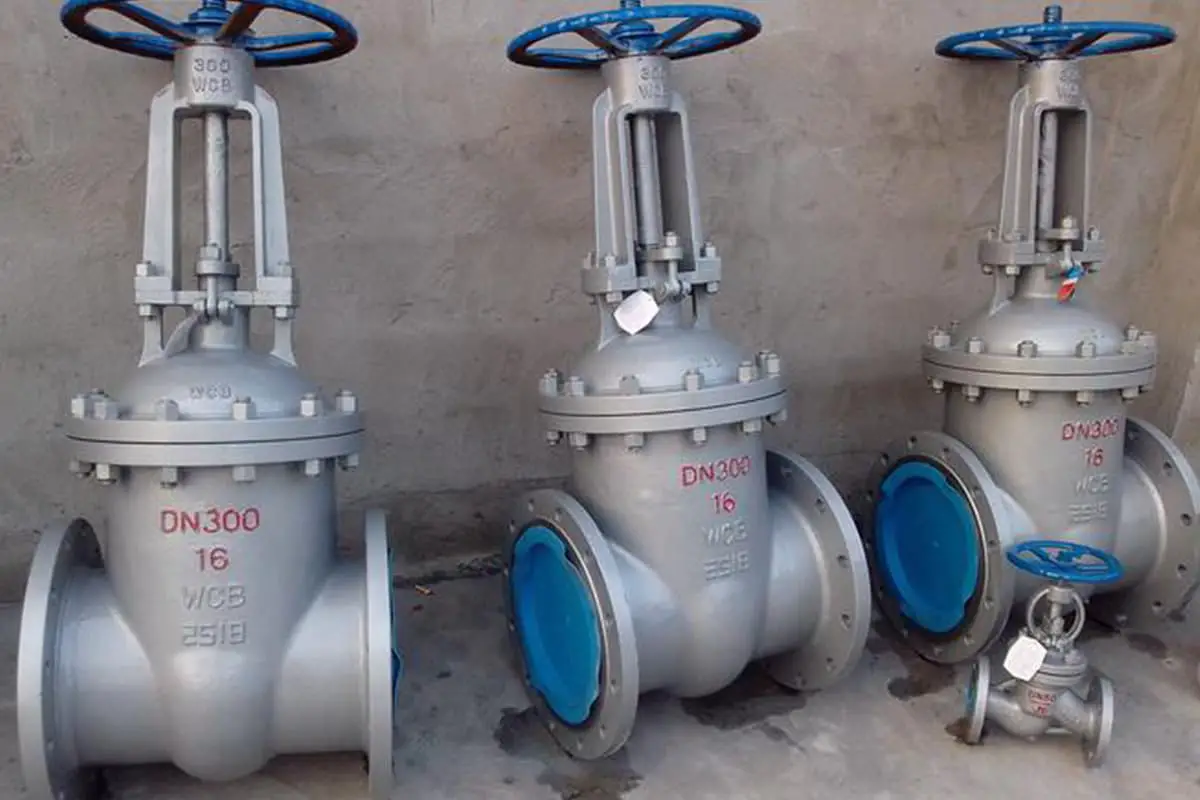What are gate valves?
A gate valve refers to a valve in which the closing member (gate) moves vertically along the axis of the passage. It is mainly used to cut the middle of the pipeline, that is, to be completely open or completely closed.
Generally, gate valves are not suitable for flow regulation. Depending on the material of the valve, it can be used at low temperature and low pressure as well as at high temperature and high pressure.
However, gate valves are generally not used in pipelines that transport media such as sludge.

Advantages of gate valves
1) Low resistance to fluids;
2) Small torque required for opening and closing;
3) It can be used in ring network pipelines where the medium flows in two directions, which means that the flow direction of the medium is not limited;
4) When fully opened, the erosion of the sealing surface by the working medium is less than that of the globe valve;
5) A relatively simple body structure and good manufacturability;
6) A relatively short frame length.
Disadvantages of gate valves
1) Large dimensions and opening height, requiring large installation space;
2) Greater relative wear on the sealing surface during opening and closing, which may cause risks to arise at high temperatures;
3) Most gate valves have two sealing surfaces, which increases the difficulty of processing, grinding and maintenance;
4) Long opening and closing times.
Types of gate valves
1. According to the construction of the gate, it can be divided into:
1) Parallel gate valve:
The sealing surface is parallel to the vertical center line, that is, the gate valve with two parallel sealing surfaces.
2) Wedge gate valve:
The sealing surface forms a certain angle with the vertical center line, that is, the gate valve with two wedge-shaped sealing surfaces.
Among wedge gate valves, there are single gate, double gate and elastic gate types. Heavy-duty gate valves have simple structures and reliable use, but require greater precision for the angle of the sealing surface, making processing and maintenance difficult, and are susceptible to getting stuck during temperature changes.
Double gate gate valves are most commonly used in water and steam pipelines.
Its advantages are: lower accuracy requirements for the sealing surface angle, temperature changes are less likely to cause wedging, and sealing surface wear can be compensated with a gasket.
However, this structure has more parts and is prone to adhering to sticky media, damaging the seal.
Most importantly, the top and bottom baffles tend to rust after prolonged use and the gate may fall.
The elastic seat seal gate valve has the advantages of simple structure and reliable use of a single wedge gate valve, and can produce a small amount of elastic deformation to compensate for the deviation in the angle of the sealing surface during processing, improving processability and is now widely adopted.
2. Based on the valve stem construction, gate valves can be divided into:
1) Rising stem gate valve:
The valve stem nut is on the valve cover or bracket. The raising and lowering of the valve stem is achieved by turning the valve stem nut when opening and closing the gate.
This structure is beneficial to the lubrication of the valve stem, and the degree of opening and closing is evident, so it is widely used.
2) Non-rising stem gate valve:
The valve stem nut is inside the valve body and comes into direct contact with the medium. The gate is opened and closed by rotating the valve stem.
The advantage of this structure is that the height of the gate valve always remains the same, so the installation space is small and suitable for gate valves with large diameter or space restrictions.
This type of structure must have an opening and closing indicator to indicate the degree of opening and closing. The disadvantage of this structure is that the valve stem thread cannot be lubricated and directly receives medium corrosion, which is easy to damage.
Gate valve applications
1. Oil and natural gas distribution pipelines. Flat gate valves with guide holes are also convenient for pipe cleaning.
2. Delivery pipelines and refined petroleum storage equipment.
3. Wellhead devices for oil and natural gas extraction, also known as tree valves used in oil extraction.
4. Pipes with suspended particles.
5. Urban gas distribution pipelines.
6. Water supply projects.

























































